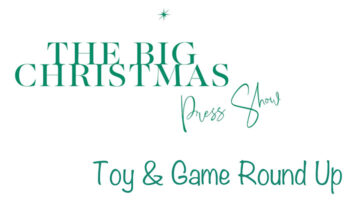Chasing, ghosting and feedback: Inventors discuss post-pitch follow up

How do you tackle follow up?
When does chasing become pestering? Would you still pitch to a company after being ‘ghosted’ by them? We asked the inventor community to share their thoughts…
How do you tackle follow-up post-pitch? Do you have a concrete approach to when and how you chase companies, or is more of an instinctive process?
Kenn Morton, KidKenn
It depends on the company. Some have sophisticated inventor portals. In these cases, we really don’t need to follow-up as they do it for you – we love working with these people! For companies that don’t have portals, it depends on the specific contact person that you’re working with. We like to reach out with an email promptly after they received our materials, to make sure they received it and have everything they need. Sometimes vendors do not give us a confirmation so whether they do or not, we’ll generally wait around two to four weeks if we’ve not received feedback to reach out to them. Sometimes we do not get feedback and continue to reach out periodically until we do.
Jonny Henton, ToyVision
For me, follow up is more fluid than fixed, but it starts in the pitch meeting with ‘next steps’. Discussing ‘next steps’ is really the first opportunity to gauge a company’s true interest and it also gives them an opportunity to manage your expectations. They can make clear any strengths and weaknesses, detail the process they intend to go through internally – and the time they need to do that. This, therefore, helps to write your ‘follow up plan’ for you.
Charlie Bason, Buzz Ideas
My approach is completely random when it comes to follow-ups. I don’t diarise, and quite often forget that I have had a product sitting in someone’s in-tray for quite some time! Sometimes being sat in the holding bay feels better than the rejection!
Anonymous
For me, it’s instinctive and varies company-to-company. You know certain people won’t get back to you – or tend get back to you after many months – so that influences how and when I’ll follow-up. With certain companies, the unwritten rule is that if they want to license something, they’ll get back to you – and if they don’t, then they’re not interested.
Jon Vanderbeek, Sweet Spot Studio Inc
It’s flexible and instinctive. You have to get a feel for if the company has had proper review time. If it really is an opportunity, they’ll respond positively to the pressure of closing a deal.
Fi Murray, Making Things Studio
Post-pitch can be a mammoth task for both sides, so we try to have an organised process. When sharing multiple creations across the globe to so many different parties – who all manage their intake differently – we need to be on top of things. We use a Trello system; it’s visually clean, digital and easy to use. We assign labels to each creation submission card; labels like ‘under review’, ‘passed’, ‘optioned’ or ‘licensed’. We can also see feedback on each creation – these form insights that are essential to improving, parking, dropping and refining a creation.
Richard Heayes, Heayes Design
Post-pitching follow-up can be one of the toughest parts of the invention process. Some companies have transparent systems in place enabling you to track your concept, others rely very much on your inventor relations contact. At the end of the day, it comes down to clear communications and expectations.
Jeremy Posner, Shenanigans Toys & Games
I like to follow up with companies immediately after meeting with them. I’ll email them a video link for every product I shared. I split them into ‘Interested’ and ‘Not Interested’ items, depending on how they were received. I include the ‘Not Interested’ items for record-keeping purposes… I like them to have a record, just in case they change their mind! I also set myself calendar reminders to follow up on items.
David Snow, The Fantastic Factory
I have a system where every WhatsApp, Zoom, Teams, call, email or meeting is logged with an action date of next contact. This is updated daily and helps me to manage the follow-up process. The length of time between each follow-up is dependent on time of year and many other factors, such as whether our product is optioned, sold or under offer. The key is to try and develop a system that works for you. Also, ask your clients how much time they need to evaluate your idea so that when you do contact them, you’re working to their timetable.
Ste Smith, WITH Creative
It’s all about good communication and understanding the process. Every company works differently, so ask them what their process is and when you can expect to hear from them. Tell them that if you don’t hear from them by that time, you’ll drop them a line to see if there’s any update.
Adam Porter, Game Designer (Doodle Rush, Pikoko, Qwuzzle)
There is no one approach – I’m flexible on this. I am courteous to publishers, and I expect the same back from them. If I hear nothing for a prolonged period, I will check in with them. Generally, I follow an in-person pitch with a short email to say thanks – and to establish contact. I might then follow up after two to three months if I haven’t heard anything, depending on the timescales that we’ve discussed in our initial meeting.
Barry McLaughlin, Barry & Jason Games
We definitely follow our instincts on this one. In general, we’ll usually wait a couple weeks before following up with anyone. Sometimes we’ll follow-up earlier if there is real interest elsewhere on one of our games and we want to make sure they are aware. Having a good reason to follow-up is often helpful.
Scott Rogers, Game Designer (Pantone: The Game, Alien: Fate of the Nostromo)
I usually follow up within a day or two after the conversation to thank them for their time and to ask if the publisher has any questions about the material I sent them. Then I check in after about two weeks or so with the same question – if I didn’t receive an answer the first time – and the addition of an invitation to have a follow-up discussion about the pitch if they are interested.
Anonymous
Some companies have automated systems that take care of the follow-up process for you, which is great. Outside of company systems, we follow up regularly. We reply straight after a meeting and then follow up after a few weeks. If a company is really structured, we’ll be. If they’re not, then we’ll be a bit more relaxed.
New inventors are often wary of ‘pestering’ companies when chasing. Is that a legitimate concern, or is it simply best to be assertive?
Kenn Morton, KidKenn
It’s a legitimate concern, but unfortunately people are busy, so you may not always get the input you need. The first time we work with a new client, we will wait before reaching out and see how it goes. When chasing feedback, it is important to do it in a very congenial way. My advice to a new inventor is not to feel like they are pestering as you’re dealing with an industry where many of the players can be super busy, unresponsive or may not be as well organised as others. Our approach is to continually follow-up in a nice way until you get the response you need. As relationships are so integral to the process, we try to never show that we are upset or impatient.
Jonny Henton, ToyVision
Whilst this is a legitimate concern, it’s often more to do with a lack of understanding or communication. New inventors might not understand or appreciate the process manufacturers have to go through internally to green light a concept. If they need to do their own work on QA, costing, or manufacturing, it can take real time. Frustrations understandably mount if there is little progress – or if the inventor is holding off from showing other companies when the manufacturer has actually already decided to pass without telling the inventor.
Charlie Bason, Buzz Ideas
Being assertive is no doubt the way forward. I always like to think my ideas will sell themselves if they are good enough, but sometimes you need to nudge to remind them about yours and bring it back up the pile. I do sympathise that inventor relations people must be swamped with ‘pestering’ emails from inventors, but I do try to be friendly! The waiting game and the tumbleweed can be tough, and a long wait doesn’t always mean good news unfortunately.
Anonymous
It’s absolutely a legitimate concern. A lot of it comes to down to how the IR person manages expectations. It’d be great to have a timeline set out by the IR people you meet, but it rarely happens. That’s where the big companies have an advantage, because they have slick digital systems in place that tell you where you are in the process. Also, people seem afraid to say “No” face to face, or feel they have to take something in for review because they can see a lot of work has gone into it. We’d actually prefer a flat “No” if that’s what they feel. The best IR people are comfortable saying no.
Jon Vanderbeek, Sweet Spot Studio Inc
I like to recognise the painstaking process the companies are in, and how many alternative agendas they have to be apprised on to make decisions. That said, it’s also worth providing an explanation for why it’s urgent from your perspective as an inventor. For example, something like ‘I have a meeting from an interested client next week and I want to give you a shot without a competitive review.’ In other words, give a reasonable reason that you need feedback or an answer – or ask for a timeline if they don’t know an exact date.
Fi Murray, Making Things Studio
Anything that is under-review or has an option coming up for expiration prompts us to ‘check in’ with that company. We like the term ‘check-in’ because relationships are one of the most delicate things in life – yes there is balance, but they also need grace, empathy and always benefit of the doubt. There are a million factors as to why someone may not have responded when you’d hoped. However, understanding the conclusion to a submission, pitch or collaborative conversation is imperative to strong external innovation relationships for both parties.
Richard Heayes, Heayes Design
When dealing with a new company who take your concept in for review, be sure to ask about their process. You want to know how long they expect it to take to review the concept and provide feedback. This will vary during the year and where the company is in the development cycle, but don’t expect a reply the next day! It can often take weeks or a few months to get feedback. For larger companies, there are many hurdles new products have to jump over and sometimes it can fall close to the finish line.
Jeremy Posner, Shenanigans Toys & Games
This is, for sure, a delicate balance. I wish I could say I figured it out, but I’m sure I have clients that would disagree… I think it’s all on a case-by-case basis.
David Snow, The Fantastic Factory
If you are pitching to a new company, always ask them how their process works so you know the timelines they are working to. Then you can manage this and plan your follow up accordingly. I think you can be assertive if you respect their timelines and processes. The key is to always be respectful as they see a lot of products. That said, don’t wait forever – contact them based on the usual timescales they are working to. After all, you do need an answer; especially if you have other companies interested in the ideas.
Ste Smith, WITH Creative
There’s definitely a balance. Everyone is busy and there are often a lot of hoops that your product has to jump through before it gets the green light, so you don’t want to be chasing before it’s been fully reviewed. On the flip side, your product could be sitting at the bottom of a pile, so you want to make sure it’s getting seen and discussed. That’s why it’s good to define a date to check in during the pitch.
Adam Porter, Game Designer (Doodle Rush, Pikoko, Qwuzzle)
I think it’s a legitimate concern and a very human one. That said, if a publisher is that easily put off by a little nudge, they probably weren’t all that committed to your game in the first place. Probably better to realise that early!
Barry McLaughlin, Barry & Jason Games
I imagine it’s different with whomever you’re dealing with, but we find it helpful to be diligent about follow-ups. People get busy, emails get lost, replies can be forgotten… It’s important to check in every few weeks to hit that sweet spot. That said, if you don’t get a reply after three check-ins, I suggest giving it a rest for a month before checking back in.
Scott Rogers, Game Designer (Pantone: The Game, Alien: Fate of the Nostromo)
I find that it’s better to be assertive. I have found that publishers are juggling so many things that it’s easy for your pitch to become a low priority for them – or even get lost in the shuffle. That said, you must always understand that a publisher might not have time for you. I find that conventions are a great way to drop in on a publisher and say “Hi!”; partially to remind them of your existence, but it can often lead to a follow-up meeting.
Anonymous
It depends on your view of pestering. How many times does a waiter drop in on you during a meal? Some find once annoying, others think that’s great service! It’s best to be assertive, but not rude. It can also come down to relationships. You’ve got to know your audience. If you know someone doesn’t like being chased regularly, don’t chase them. If you know someone is happy to be regularly chased, then go for it.
If you don’t get a reply from a company, does that impact whether you’d pitch to them again in the future? Or do you see this kind of ‘ghosting’ something that’s just part and parcel of life as an inventor?
Kenn Morton, KidKenn
There are some clients who will not respond for several weeks – and even months – but then do respond when it’s time to pitch again. That’s not ideal but is par for the course. We’ve also experienced a couple of instances where companies expressed high interest, asked us to send out materials but we never heard back from them – regardless of how many times we reached out. As inventors, we do value our intellectual property. Complete radio silence after we took the time to deliver what was requested does not show great respect, trust or business ethics. In those rare cases, we would not pitch to them in the future.
Jonny Henton, ToyVision
Sadly, this is something that happens a lot… I don’t necessarily think it’s intentional though and wouldn’t go so far as to remove people from a pitch list for future concepts unless they were a repeat offender – three strikes and you’re out! Conversely, I would – and do – actively prioritise those that always give comprehensive and timely feedback as they clearly respect the inventor community and openly encourage its position in the industry. Plus, feedback is invaluable. So although I’d think twice about ‘counter ghosting’, I always favour those that genuinely appreciate what you bring to the table.
Charlie Bason, Buzz Ideas
I do try not to take ghosting personally, but it’s never easy – especially if hopes are high after a pitch. A company may not have an opening for any of my ideas, but even a standard rejection or holding email is better than nothing. Companies that take time to reply with helpful feedback go to the top of the list the next time I have stuff to share. So while I may still show concepts to companies who don’t reply, they certainly aren’t a priority.
Anonymous
I don’t have a three strikes policy, but it absolutely impacts who I show ideas to. Companies that give timely feedback – whether through an online system or just through organised inventor relations – are who I prioritise. Once a company has ghosted me few times, eventually I’ll stop showing them stuff. Part of the problem might be that if your job is product development, and someone tells you do Inventor Relations as well, it’s a difficult thing to juggle. Inventor Relations is a full-time role. If you’re serious about working with inventors, you should have a specific dedicated inventor relations role.
Jon Vanderbeek, Sweet Spot Studio Inc
Ghosting usually happens if they are too busy. It signifies that you don’t have a successful follow-up strategy, or that your expectations are too high, or that they are being disrespectful – but never assume the latter. There is always a good way to keep following up. It helps to have a partner that can also call, write or email. I’ve had my partner write in to ask if a client had checked their junk box since it’s not like them to not write back. I’ve used this to follow up with a client that hasn’t returned any correspondence in a long time.
Fi Murray, Making Things Studio
‘Ghosting’ shouldn’t feel part and parcel of any type of relationship, including professional B2B ones. It’s a rarity in this industry – we never pitch unsolicited and only to those we know are open to external innovation with an agreed submission… But if it happens, it’s a learning experience. Nurture the relationships that do give you that lovely warm gut feel. There are so many awesome companies that open their arms wide to external innovation, act as incredible custodians to creations and manage the review process so efficiently. These are the ones that, even with a pass, give your creations a little cuddle of feedback on the way out of the door, wishing you all the best. It’s those relationships you’ll go back to time and time again, with hopefully something they’ll say yes to.
Richard Heayes, Heayes Design
I certainly give companies who provide timely feedback the first chance to see new ideas. On the flip side, there are some companies who I am unlikely to share new ideas with based on their poor post pitch feedback. Both parties should remember this is a business transaction, so it’s important to behave in professional manner. Companies should treat new ideas with the value they deserve… Don’t review lots of new ideas if you don’t have capacity to properly review them!
Jeremy Posner, Shenanigans Toys & Games
Missing a response to an email is no big deal from a client and it’s not something you can afford to get offended by. Inventor Relations personnel work so hard – and so often have so many jobs – that things are bound to fall through the cracks. I know they look at hundreds of games at a time… That’s so much to keep track of.
David Snow, The Fantastic Factory
As an inventor, you share your ideas with companies regularly. If you don’t get a reply, there is usually a short time until you see them again to follow up face-to-face and get a yes or no. The key here is to never take things too personally as there are a million reasons why you don’t get the follow up you need. That said, if you have pitched ideas to a company and they don’t follow up continuously, it would certainly raise a question of why bother sharing ideas. In our experience, we no longer share our ideas with some companies as it wastes our time. We focus on companies that can give us both good and bad feedback, so we know where we stand and can move on with the day-to-day.
Ste Smith, WITH Creative
We ask for feedback from everyone we work with. This is so important for both the inventor and the company. I don’t think it’s good business to ignore someone who has taken the time to submit a product. Of course, it’s not possible for everyone to get detailed feedback, but at the very least inventors should get an email reply saying ‘thanks, but the concept is not of interest’.
Adam Porter, Game Designer (Doodle Rush, Pikoko, Qwuzzle)
Certainly, ghosting would put me off. The designer-publisher relationship is one of equals, and the respect should be two-way. Sadly, it’s part and parcel of life as an inventor but it shouldn’t be this way. Of course, we can all show understanding if publishers are delayed at busy times of year – but staying in touch is important.
Barry McLaughlin, Barry & Jason Games
It’s definitely something that can happen and doesn’t always reflect the relationship or the quality of your idea. That said, I find that people who are more responsive are usually easier to work with, so while I won’t necessarily write-off the ghosts, they definitely move down my list. Unless I’m putting together a haunted house; then they’re the first ones I call!
Scott Rogers, Game Designer (Pantone: The Game, Alien: Fate of the Nostromo)
I try not to take ‘ghosting’ personally, but fortunately, I haven’t encountered it very often. The game industry is very small and word about that type of behaviour does get around quickly. I know that sometimes people have a hard time saying “no” to someone and avoiding saying it might be their way of avoiding any sort of negative interaction. Pain avoidance is part of human behaviour. While getting ignored can be frustrating and disappointing, I don’t consider it to be a big enough ‘sin’ to warrant writing someone off as a potential future business partner.
Anonymous
Looking at companies across the board, they’re all different… It’s like flying. Sometimes your experience is like flying budget economy, and other times it feels like First Class. Generally, the issue of ghosting comes down to the person you’re dealing with, not the company itself. It’s why sometimes when teams change, things can get better or worse when it comes to getting responses. If we boil it down, when someone doesn’t come back to your email after a meeting, it means that don’t ultimately didn’t like the idea. That said, if – after a positive meeting – they take a prototype from you and don’t get back to you, that’s when it’s bad form… Especially when time and money has gone into these things. Inventors talk about this kind of thing, so the community tends to know who’s good and who’s bad.
–
To stay in the loop with the latest news, interviews and features from the world of toy and game design, sign up to our weekly newsletter here






















